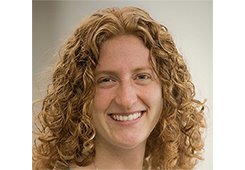
Using Universal Design for Empowering Neurodiversity in the Classroom
by Ryan Rideau, Associate Director for Teaching, Learning, and Inclusion at the Center for the Enhancement of Learning and Teaching (CELT)
Kirsten Behling, Associate Dean of Student Accessibility and Academic Resources, Kate Pillette, Learning Specialist at Student Accessibility Services, and Katie Swimm, Assistant Director of the Academic Resource Center, joined CELT to facilitate a workshop titled, “Universally Redesigning Your Course.” In this engaging and thought-provoking workshop, the presenters shared strategies for how faculty members can design their courses that meet the needs of our neurodiverse student body. According to Behling, Student Accessibility Services currently serves nearly 950 students at Tufts on the Medford/Somerville campus, and many more may have neurological differences without having registered with SAS. As such, it is imperative for faculty to proactively design their courses to support learning of all students. Here a few highlights from the workshop.
1. What is Universal Design for Learning (UDL)?
UDL is an education framework that is designed to promote accessibility and reduce barriers to learning. There are three key principles for UDL. The first, multiple means of engagement, promotes varied ways for students to engage and interact with learning materials. The second principle, multiple means of representation, calls for instructors to present information to students using multiple methods (e.g., lectures, videos, discussion, etc.). The final principle, multiple means of action/expression, encourages instructors to allow students to demonstrate knowledge in multiple ways. It is important to recognize that UDL is not about lowering academic standards, but rather about ensuring equitable learning opportunities for all students.
2. Develop a Plus-one Approach
The plus-one approach is an easy way for faculty to works towards building a course that integrates the principles of UDL. Rather than feeling overwhelmed by the prospect of overhauling your course to fit UDL, a plus-one approach simply asks faculty to look at all the ways students interact with the course, and add one additional option. View the table below for examples of how to integrate a plus-one approach into your course.
| COURSE COMPONENT | TRADITIONAL APPROACH | PLUS-ONE APPROACH |
| Course goals and objectives | Stated in the syllabus | Diagram how the goals related and intersect with one another |
| Instructional design | 50-minute lecture | Break lecture into 15-minute intervals, allow for a few minutes of group reflection or discussion after each interval |
| Visual representation of content | Slides presented during class | Provide slides to students ahead of time to allow students to follow along |
3. Assessment is Key:
Make sure your assessments are tied to your learning objectives and are clearly articulated. Self-assessments, which prompt students to reflect on their learning, are a critical component of student learning. One example of a self-assessment is an exam wrapper. In addition to integrating opportunities for self-assessment, it is important to carefully design your larger assessments. Reflect upon whether there are additional ways students could demonstrate their learning that are consistent with your learning objectives. If there are, you may want to give students a choice about how they will complete the assignment. This equalizes the playing field by not prioritizing students who may be more comfortable expressing their learning in a single format.
4. Be Aware of Deadlines:
In planning your course, please be aware of the pass/fail and withdrawal deadlines. Have meaningful assignments and feedback prior to these deadlines to allow students the opportunity to know their progress in the course. This may also help students to avoid taking an incomplete in a class. While granting a student an incomplete may appear to be beneficial to the students, it can often cause additional stress and anxiety. This is because many students do not complete their work before the start of the next semester and thus have to complete this coursework in addition to another full course load.
These are only a few key points and ideas that were shared during the workshop. If you have any questions about how to better integrate principles of UDL into your course, feel free to contact Ryan Rideau at (ryan.rideau@tufts.edu).
*Kirsten Behling recently co-authored the book Reach Everyone, Teach Everyone: Universal Design for Learning in Higher Education. You can find more strategies for integrating UDL into your course in this book.
See Also
- Creating an Inclusive Learning Environment
- Supporting Trans and Gender-Nonbinary Students
- Helping Differently Prepared Students in Large Classes
- Student Engagement
- Assessment Approaches
- Assessment Techniques
Image credit: Students attend Art Education and the Exceptional Child, a summer course taught by Lecturer Kathy Furst at the SMFA on August 6, 2018 (Anna Miller/Tufts University)



